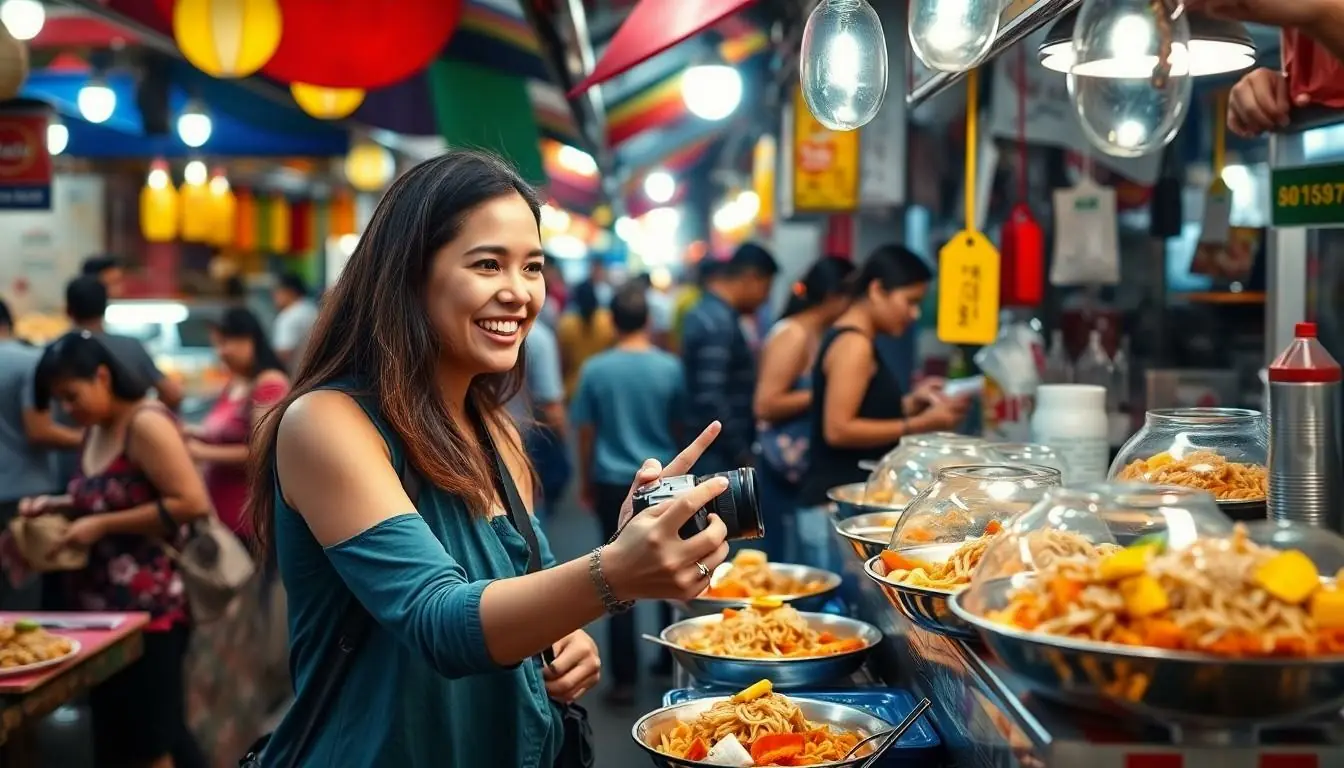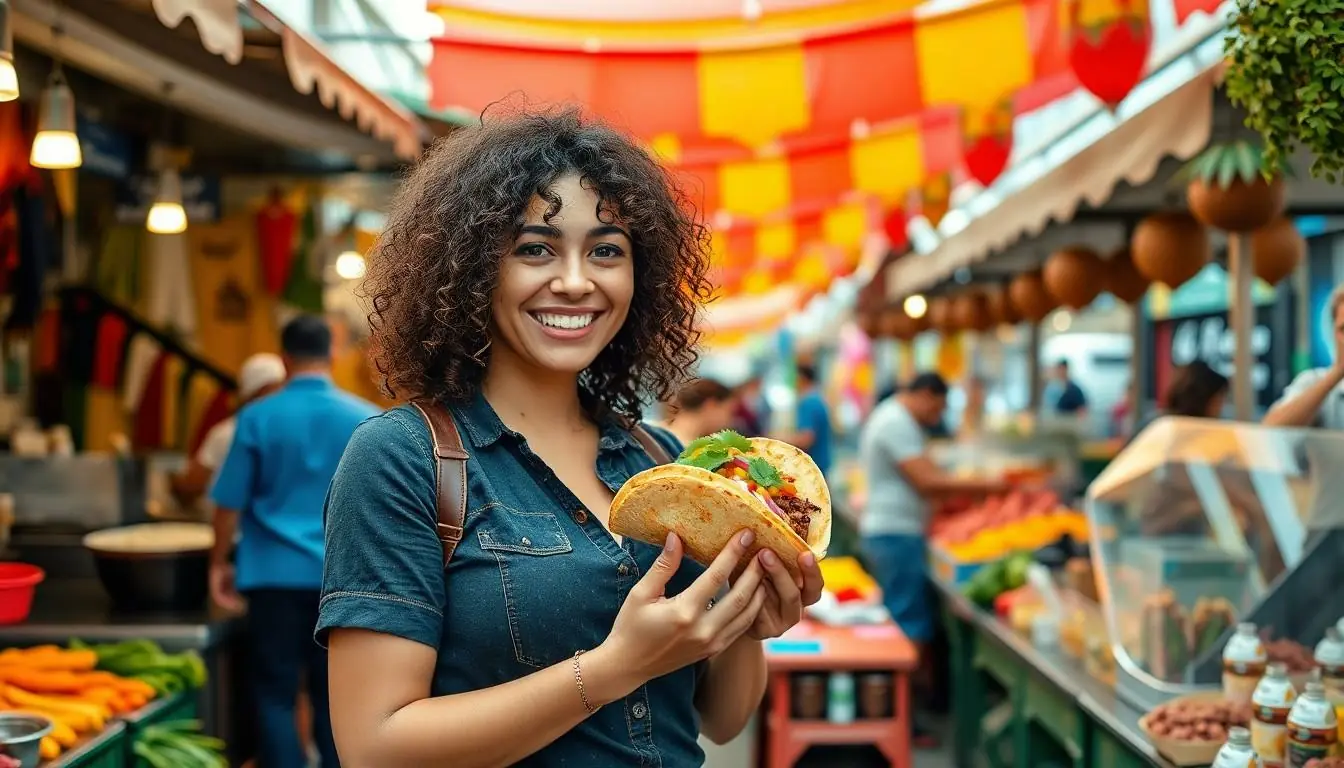Imagine wandering through vibrant markets, the aroma of sizzling street food wafting through the air, and your taste buds tingling with anticipation. For many, travel isn’t just about seeing new sights; it’s about savoring every bite along the way. Food has a magical way of connecting cultures and creating unforgettable experiences.
Table of Contents
ToggleThe Joy of Travel For Food
Traveling for food offers an immersive experience that goes beyond simply dining. Tasting local dishes reveals the history and culture of a place, making each meal a narrative of its own. Street food stalls often showcase vibrant flavors, inviting travelers to explore unique culinary traditions.
Explorers can wander through markets filled with fresh produce and artisanal goods. The sights and smells encountered create a sensory journey that enhances overall travel experiences. Immersing oneself in food culture allows for connections, both with locals and other travelers.
Participating in cooking classes provides hands-on engagement. Tourists learn to prepare regional specialties while discovering local ingredients. These experiences transform meals into memorable activities, fostering appreciation for diverse culinary practices.
Culinary festivals celebrate regional cuisine, drawing crowds eager to sample delights. Travelers often find themselves savoring dishes they’ve never encountered, opening their palate to new flavors. Venturing into local eateries enhances the journey, as hidden gems often offer the most authentic experiences.
As explorers share meals with locals, conversations unfold around food traditions. This exchange fosters connections that go beyond language, building bridges between cultures. Traveling for food not only satisfies the appetite but also nurtures a deeper understanding of the world’s diversity.
Popular Food Destinations

Travelers often seek unique culinary experiences that reflect local culture. Key food destinations offer diverse tastes and unforgettable meals.
Street Food Hotspots
Bangalore, India features an array of street food, from spicy dosas to crispy vadas. Bangkok’s vibrant stalls serve pad Thai and mango sticky rice, enticing every visitor. In Mexico City, tacos al pastor and churros tempt travelers at every corner. Street food in Hanoi thrives with banh mi and pho available on bustling sidewalks. Each city provides a chance to explore regional flavors without formal dining expectations.
Fine Dining Experiences
Tokyo boasts Michelin-starred restaurants like Sukiyabashi Jiro, renowned for sushi. Paris offers world-class dining experiences at establishments like Le Meurice, where French cuisine comes alive. In New York City, Eleven Madison Park serves a plant-based tasting menu highlighting seasonal ingredients. Rome’s Il Pagliaccio captivates diners with a modern twist on Italian dishes. Each fine dining experience immerses guests in culinary artistry and innovation, showcasing the finest local and international flavors.
Culinary Adventures
Travelers often seek culinary adventures to discover local flavors. Immersive food experiences transform journeys, turning meals into unforgettable stories.
Cooking Classes and Workshops
Cooking classes provide hands-on experiences in regional cuisine. Participants learn techniques that highlight local ingredients. In Italy, for example, tourists might make pasta from scratch, soaking up culinary traditions. In Thailand, cooking schools often begin with market tours to select fresh produce. Each lesson deepens the understanding of cultural dishes. Students gain insights into the history behind recipes, elevating their appreciation for local food. The process fosters connections to both chefs and fellow learners, creating a memorable experience.
Food Festivals and Events
Food festivals celebrate regional specialties and vibrant communities. Events like the San Francisco Street Food Festival and the Melbourne Food and Wine Festival draw large crowds eager to sample diverse flavors. In Mexico, Día de los Muertos festivities include traditional dishes that tell stories of heritage. Globally, festivals offer opportunities to meet local chefs and discover hidden gems. Markets come alive with tasting stations featuring artisanal products and street food vendors. Each festival allows travelers to connect with culture through food, enriching their travel experiences.
Cultural Significance of Food
Food serves as a vital cultural artifact, reflecting local traditions and customs. Traditional dishes often embody historical narratives that connect communities to their origins. Exploring these culinary staples provides insight into the values and heritage of a region.
Traditional Dishes and Their Histories
Traditional dishes tell stories of cultural evolution and adaptation. Italy’s risotto narrates the agricultural practices of the rice-growing regions, while India’s biryani reflects its historical trade routes. Each flavor encapsulates the ingredients and techniques passed down through generations.
Vietnam’s pho, with its rich broth and aromatic herbs, highlights the fusion of Chinese and French influences. Mexican mole showcases the blend of indigenous ingredients with colonial spices, representing a culinary crossroads. Discovering these dishes leads to a deeper understanding of local identities. Each bite becomes a lesson in history, transformation, and community connection.
Travel Tips For Food Lovers
Traveling for food requires thoughtful planning and a keen sense of curiosity. Food lovers benefit from a structured approach, enhancing their culinary adventures.
Planning Your Food Itinerary
Creating a food itinerary involves research and flexibility. Identify local markets, street stalls, and renowned restaurants in the travel destination. Prioritize visits to culinary festivals showcasing regional specialties. Allocate time to participate in cooking classes, allowing for hands-on experiences with local cuisine. Balance popular dining spots with hidden gems, as these often offer unique flavors. Adjust the itinerary based on seasonal offerings and local events to fully immerse in the food culture. Seeking recommendations from locals can lead to unforgettable dining experiences.
Best Apps and Resources
Utilizing apps and online resources streamlines culinary travel. Download local food guides to discover nearby eateries and trendy dining spots. User-driven platforms like Yelp or TripAdvisor provide reviews and ratings, helping select restaurants. Explore apps designed for street food enthusiasts, highlighting must-try dishes. Consider using Google Maps to locate food vendors and markets, ensuring easy navigation. Social media platforms often showcase culinary experiences and hidden treasures, providing inspiration for food itineraries. Keeping these resources handy enhances overall travel experiences while indulging in local flavors.
Traveling for food opens up a world of flavors and connections that enrich every journey. It’s more than just tasting new dishes; it’s about understanding the culture and history behind them. Each meal tells a story and fosters relationships that transcend borders.
From bustling street markets to elegant fine dining, the culinary landscape offers endless opportunities for exploration. Engaging in local cooking classes or attending food festivals deepens the travel experience, allowing for personal connections with both food and people.
Ultimately, food serves as a gateway to discovering the heart of a place, making culinary travel an unforgettable adventure. Embracing this journey not only satisfies the palate but also nurtures a greater appreciation for the world’s diverse cultures.





